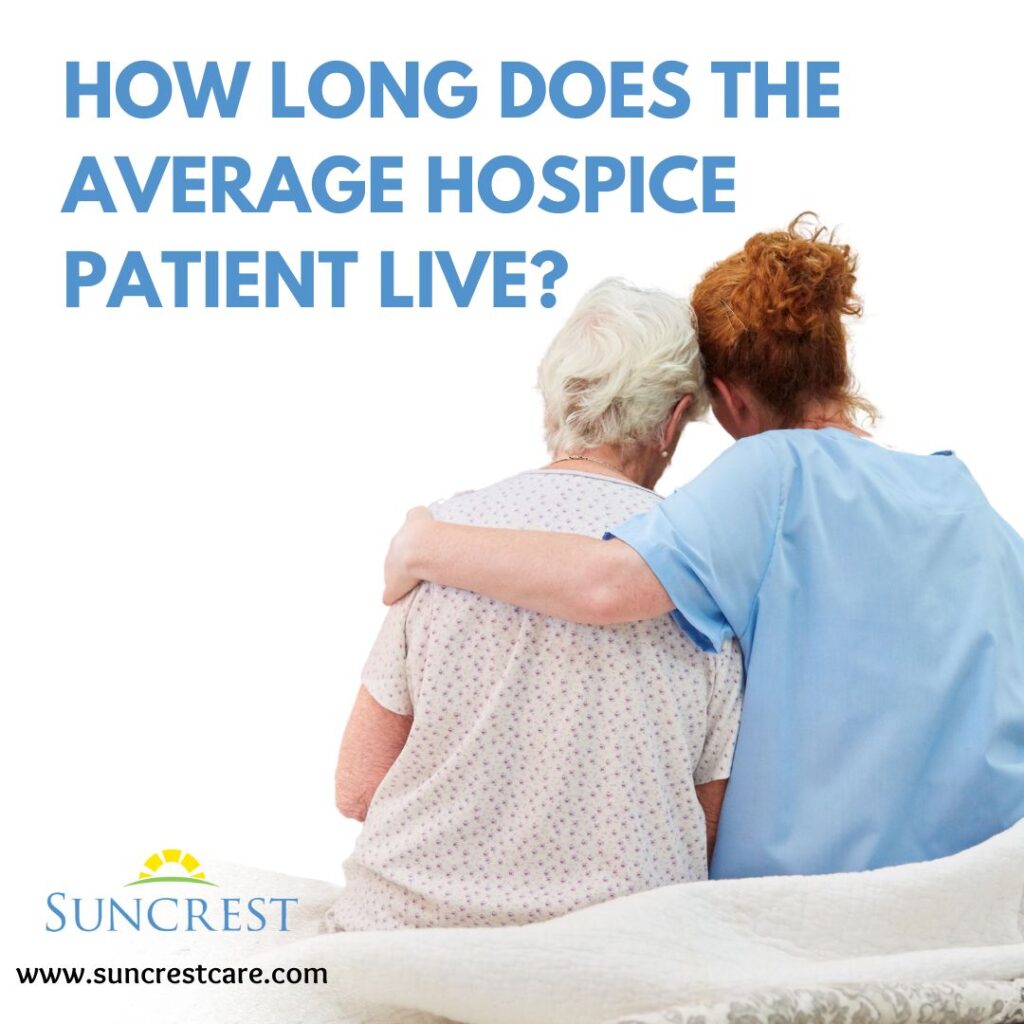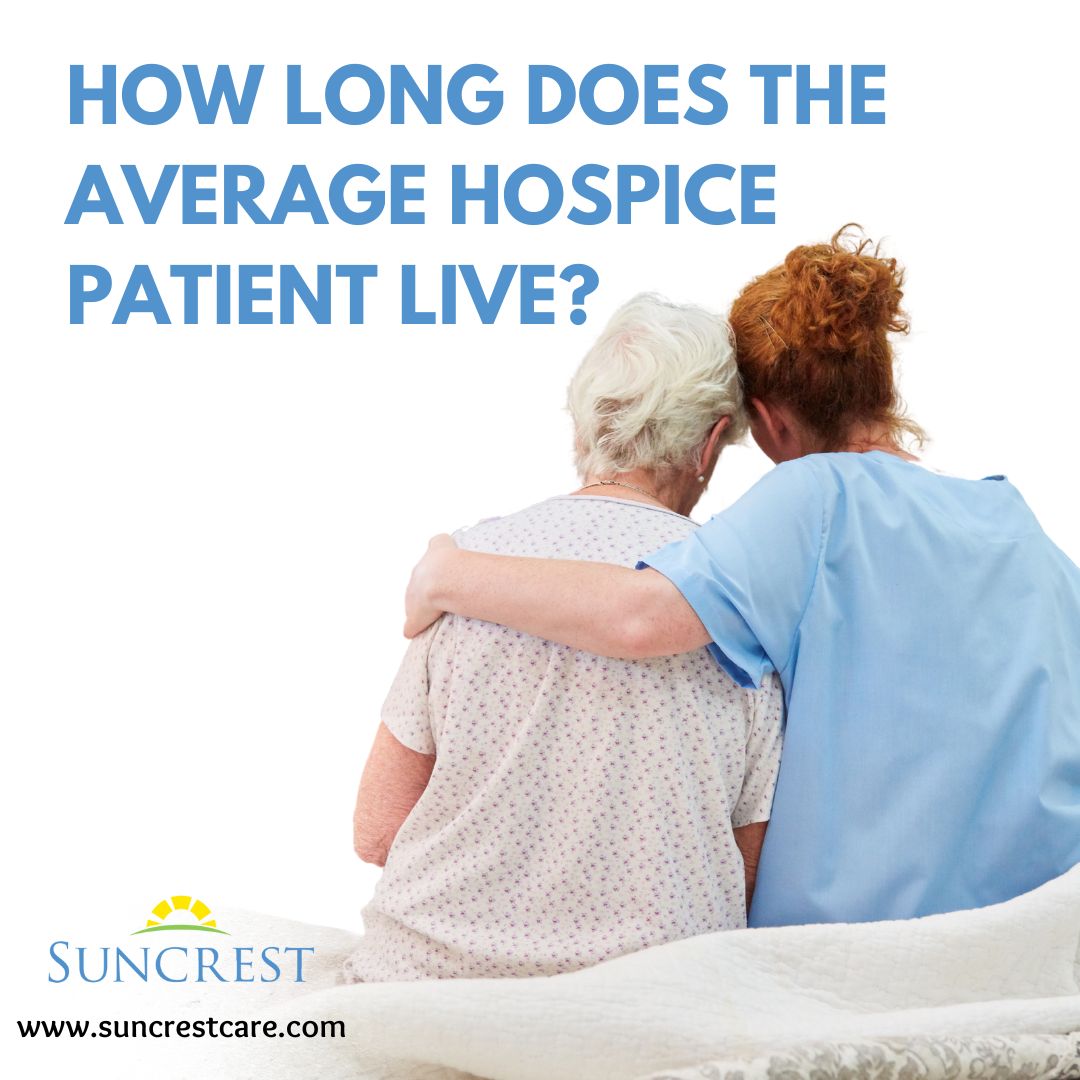What Is Hospice?
Understanding Hospice Care
Hospice Definition: Hospice care is a specialized type of health care that focuses on comfort and support for people who are facing a terminal illness. The primary goal is to help patients live their final days with dignity, free from pain, and surrounded by loved ones. Hospice care supports both the patient and their family, addressing physical, emotional, and spiritual needs.
The hospice definition centers on improving quality of life rather than trying to cure the illness. Care often takes place in the patient’s home, a nursing facility, or an assisted living facility. The hospice team includes doctors, nurses, aides, social workers, spiritual counselors, and volunteers working together to create a supportive environment.


How Long Does the Average Hospice Patient Live?
Hospice Care Eligibility and the Six-Month Prognosis Rule
To enter hospice care, a patient must have a referral from a doctor. The main requirement is a medical prognosis of six months or less to live if the illness follows its regular course. This “six-month rule” is set by Medicare, which pays for most hospice services. If someone does not yet qualify for hospice, their doctor might suggest palliative care or other support.
What the Research Says About Hospice Length of Stay
Most hospice patients live less than six months after admission. According to the National Institutes of Health, about 90% of those who enter hospice die within the six-month timeframe. However, many people are referred late in their illness, and the majority pass away within just a week of enrolling in hospice. This often happens because people wait until their symptoms are severe before starting hospice.
Can Hospice Stay Be Extended?
A hospice stay can be extended if a patient lives beyond six months and still meets the criteria for hospice care. The doctor must confirm that the patient still has a life expectancy of less than six months. As long as this requirement is met, patients can continue to receive hospice services.
What Happens if a Patient Improves?
Occasionally, patients improve unexpectedly. If their health gets better or their disease goes into remission, they may no longer qualify for hospice. These patients can leave hospice and return to regular medical care if needed.
Can People Graduate from Hospice?
Yes, people can “graduate” from hospice. While rare, some patients recover enough to leave hospice care. This can happen if a patient responds better than expected to symptom management, or if their underlying condition improves. If needed, they can re-enter hospice care later if their health declines again.
What Factors Affect How Long Hospice Patients Live?
According to NIH, there are five main factors that affect how long a hospice patient will live.
- Age: Patients younger than 65 die within the six-month timeframe less often.
- Gender: Men are more likely to die than women within six months.
- PPS score: The Palliative Performance Scale evaluates such criteria as whether patients are ambulatory and able to care for themselves. A higher score means better chance eligibility for hospice and greater likelihood of dying sooner.
- Location: Patients admitted to hospice from a hospital are most likely to die within six months. Those admitted from home are next most likely to die within six months and those admitted from nursing homes are least likely.
- Diagnosis: Patients diagnosed with cancer are more likely to die within six months than those diagnosed with other diseases or conditions.

How Long Does the Average Hospice Patient Live?
Notwithstanding these factors, most patients who enroll in hospice care do so late in the course of their illness, with the majority dying within six months of admission. However, a notable minority survive beyond this time frame. One large study found that only about 14.9% of hospice patients lived longer than six months after enrollment, highlighting the challenges in accurately predicting life expectancy for those with terminal illnesses. Survival rates can vary widely depending on diagnosis and other individual factors, but this statistic underscores that while hospice is designed for those with a limited prognosis, some patients do experience longer-than-expected survival.

Who Qualifies for Hospice Care?
Medical Criteria for Entering Hospice
A patient may qualify for hospice care when they have a serious illness with a life expectancy of six months or less, as estimated by a doctor. This decision is based on the patient’s disease, overall health, and how the illness has progressed. Physicians consider factors like weight loss, decline in daily functioning, and worsening symptoms when recommending hospice.
The Role of a Doctor’s Referral in Hospice Care
Hospice care starts with a doctor’s referral. This referral confirms that the patient meets the criteria for hospice and is ready to focus on comfort rather than cure. Once the referral is made, a hospice team meets with the patient and their family to create a personalized plan. The goal is to make each day as comfortable and meaningful as possible for both the patient and loved ones.
Difference Between Hospice and Palliative Care
Hospice and palliative care are closely related, but there are important distinctions. Palliative care meaning focuses on relief from symptoms and stress linked to any serious illness, at any stage. It is available to patients who are still pursuing treatments or cures for their condition.
Hospice begins when a patient chooses to stop curative treatments and has a prognosis of six months or less to live. Both types of care aim to improve comfort, but hospice care is for those who are nearing the end of life and want to focus on quality of living each day.
Why Do Many Patients Enter Hospice Late?
Misunderstandings About Hospice Definition and Benefits
Many families delay hospice care because they do not fully understand the hospice definition or what hospice can offer. Some believe hospice care signals hope is lost or that care will stop, but this is not true. Hospice focuses on comfort, dignity, and support—helping patients manage pain and symptoms while providing emotional and spiritual care. Waiting too long means missing out on the full support hospice brings.

The Importance of Early Referral
When doctors and families discuss hospice care early, patients receive more comfort and support in their final months. Early referral allows time to address physical, emotional, and spiritual needs. Patients can also build relationships with their hospice team and maximize available services. Starting hospice sooner helps families and loved ones feel more supported during a difficult time.

Suncrest Hospice: Compassionate End-of-Life Care
Our Commitment to Every Patient and Family
At Suncrest Hospice, we believe every person deserves dignity and comfort at the end of life. Our care team listens to each patient’s wishes and works closely with families to create a supportive environment. We offer physical relief through skilled nursing, emotional comfort through counseling, and spiritual support for anyone who needs it. We also help families find strength and comfort with bereavement support after a loved one passes.
How to Start the Hospice Care Conversation
Talking about hospice care can feel difficult, but starting the conversation early can make a real difference. If your loved one is living with a serious illness and you are considering hospice, reach out to Suncrest Hospice. Our team is here to answer questions, explain your options, and help you make choices that honor your loved one’s wishes. Call us today to schedule a meeting with our caring staff and learn more about how we can help.
More resources:
What to Say to Someone on Hospice
Can a Patient Go to the Hospital After Starting Hospice Care?
Frequently Asked Questions About Hospice Care
1. What is the main goal of hospice care?
The main goal of hospice care is to provide comfort and support to patients who have a terminal illness. Hospice focuses on quality of life, pain relief, and emotional and spiritual support for both patients and their families.
2. How long does the average hospice patient live?
Most hospice patients live less than six months after starting hospice care, which matches the usual prognosis for hospice eligibility. Many patients enter hospice late, so some pass away within a week of admission. Some patients live longer, especially if they seek hospice earlier.
3. What is the difference between hospice and palliative care?
Hospice care is for patients with a life expectancy of six months or less who have chosen comfort over curative treatment. Palliative care meaning involves support and symptom relief for people with serious illness at any stage, even if they are still getting treatment to cure their condition.
4. Can someone leave hospice if their condition improves?
Yes, if a patient’s health stabilizes or improves, they can leave hospice care. Some patients “graduate” from hospice and return to regular medical care. They can come back to hospice if their condition changes again.
5. Who qualifies for hospice care?
A person qualifies for hospice care if a doctor determines they have a life expectancy of six months or less due to a serious illness. Entry into hospice starts with a doctor’s referral and a review of the patient’s medical needs and wishes.


